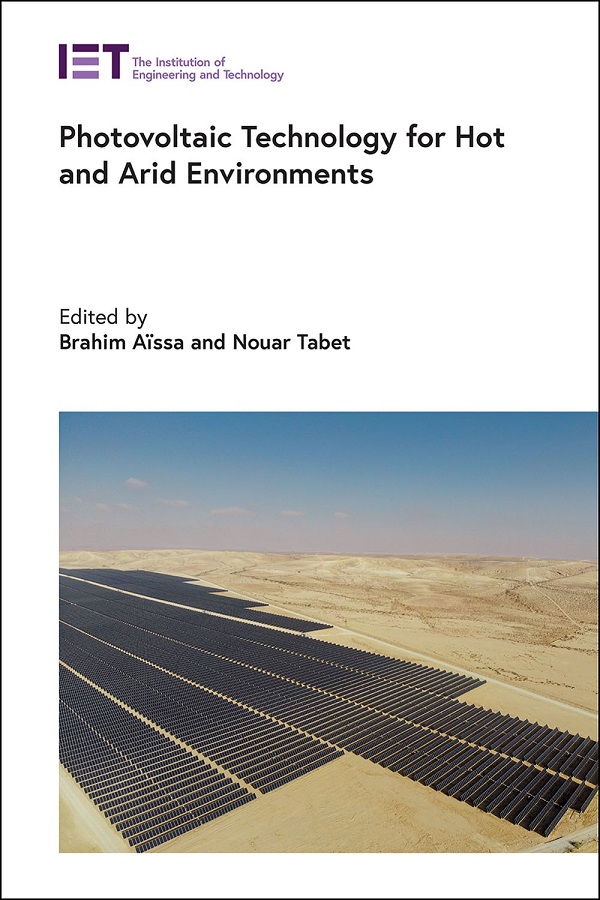- Agricultural Engineering and Technology
- Applied Physics
- Built Environment
- Computing and Networks
- Control, Robotics and Sensors
- Electrical Regulations
- Electromagnetics and Radar
- Energy Engineering
- Healthcare Technologies
- History and Management of Technology
- IET Codes and Guidance
- Manufacturing
- Materials, Circuits and Devices
- Model Forms
- Security
- Telecommunications
- Transportation

Photovoltaic Technology for Hot and Arid Environments
Edited by Brahim Aïssa, Nouar Tabet
The need to reduce greenhouse gas emissions and dependency on fossil fuels necessitates accelerated deployment of renewable energy, such as photovoltaics (PV). Regions with high insolation in the "Sun Belt" covering north Africa and the middle east, as well as in Australia, parts of Latin America, and elsewhere offer tremendous potential for PV, including for green hydrogen production. However, these regions are characterized by a hot climate and a dusty environment, both causing reduction of PV panel performance by 25% or more. The development of solar cells with enhanced resistance to thermal degradation and the reduction of panel soiling have therefore been subjects of intense study.
Key developments include optimisation of the temperature coefficient of heterojunction solar cells, developing cells of higher open circuit voltage that are expected to show lower reduction of the panel efficiency at high temperatures, and analysis of soiling effects for better predictability and countermeasures. Based in part on research undertaken at Qatar Environment and Energy Research Institute (QEERI), and with contributions from chapter authors from a range of international institutions, this book addresses recent trends and developments in its field. Chapters revise solar energy resources and PV principles and thermodynamics, solar cell and module technology, bifacial solar cells, and soiling. A case study from Australia is followed by conclusions and future outlooks.
Photovoltaic Technology for Hot and Arid Environments covers developments in the field for researchers and experts in industry and academia, and advanced students with an interest in the topic.
About the Editors
Brahim Aïssa is a senior scientist at the Qatar Environment and Energy Research Institute (QEERI). He earned his PhD with highest honors from INRS-EMT in Canada, then joined QEERI in 2014. In collaboration with the École Polytechnique Fédérale de Lausanne, he participated to hit, twice, the new world record for power conversion efficiencies in quasi-mono silicon solar cells. He published over 180 refereed papers, three books, and holds many patents, and has numerous international awards and fellowships including the NPI award from European Space Agency.
Nouar Tabet is a professor in the Physics Department and Dean of the college of Science at the University of Sharjah, United Arabic Emirates. His research interests include solar cells, defects in semiconductors and oxides, thin films, nanostructured materials, X-ray, electron and ion spectroscopies. He published more than 120 journals papers, edited and authored books, and won numerous awards. Previous positions include chief scientist at Qatar Environment and Energy Research Institute (QEERI), visiting scientist at Berkeley National Laboratory and MIT, USA, and rector of the University of Constantine in Algeria.
Publication Year: 2023
Pages: 362
ISBN-13: 978-1-78561-911-3
Format: HBK
Editors: Brahim Aïssa, Nouar Tabet
